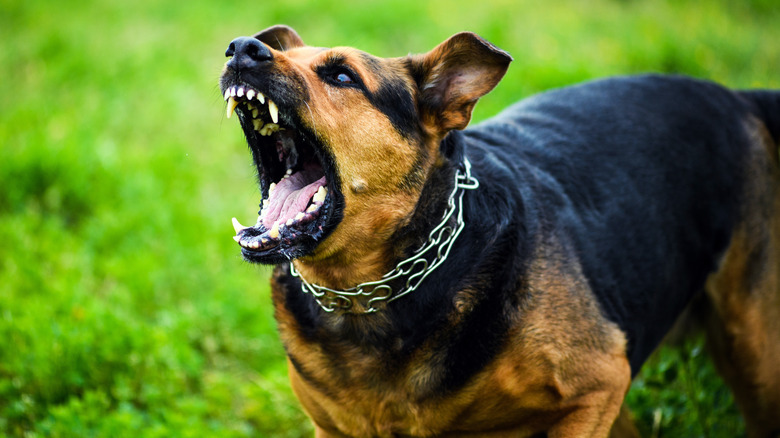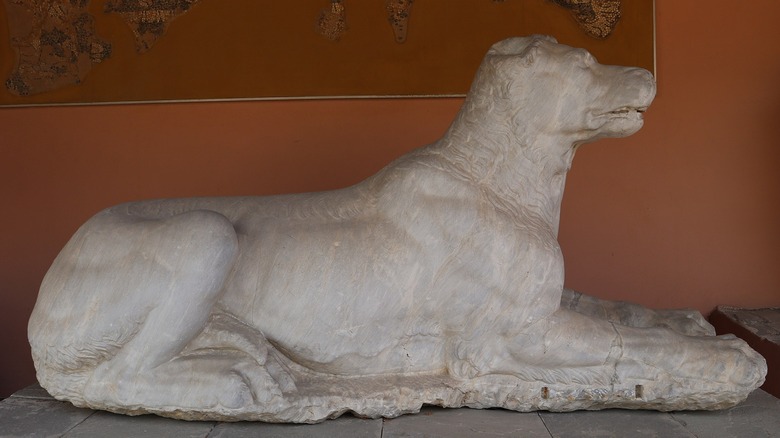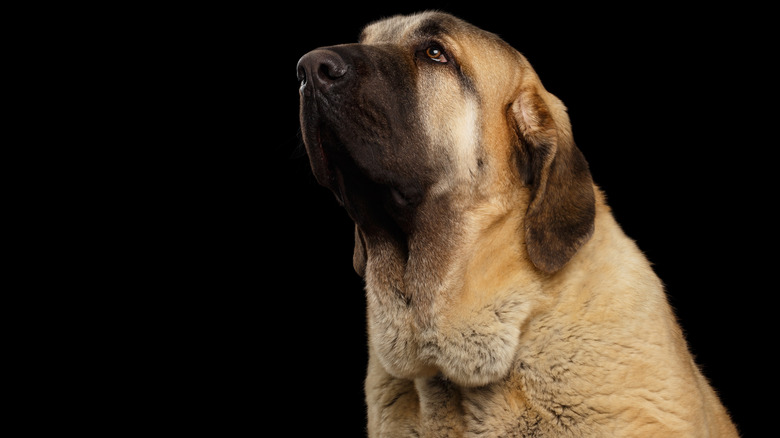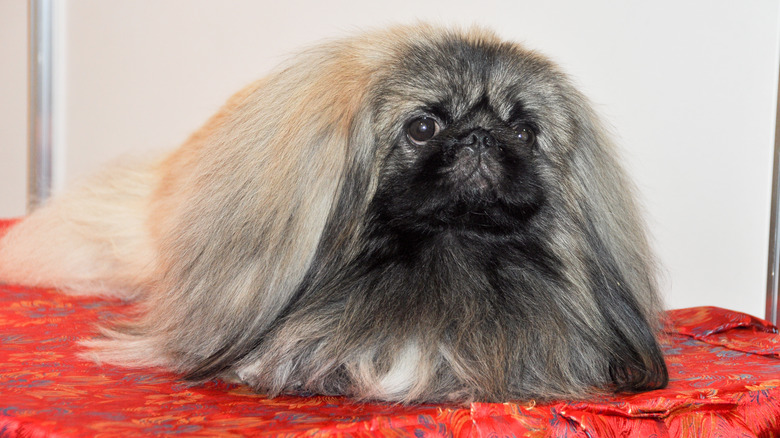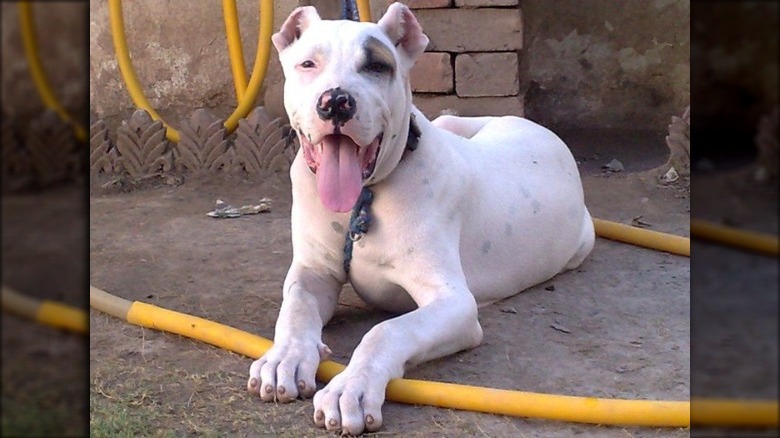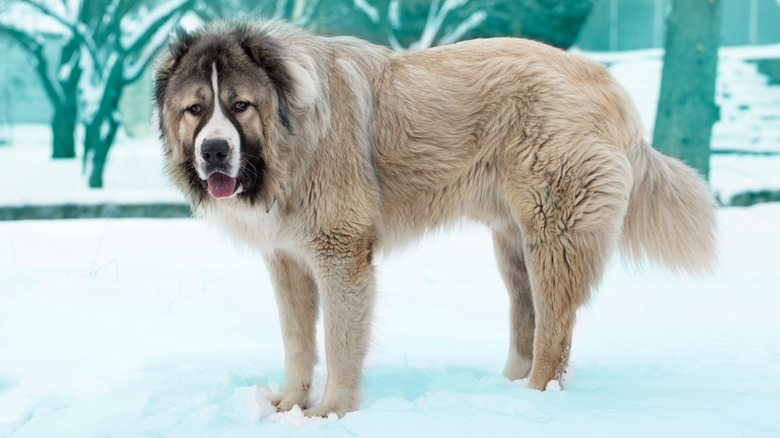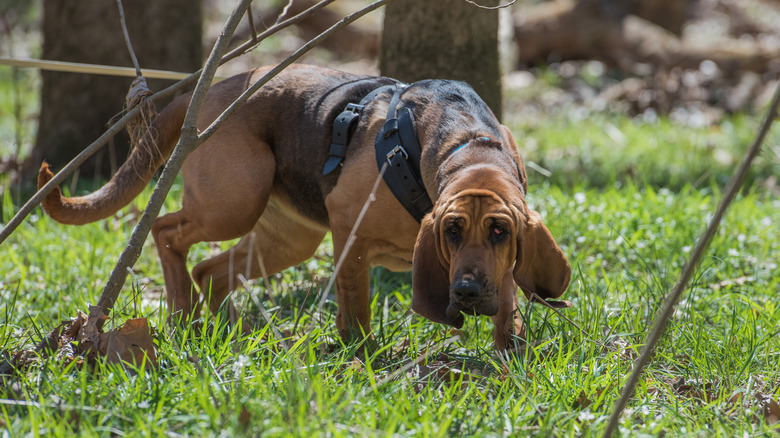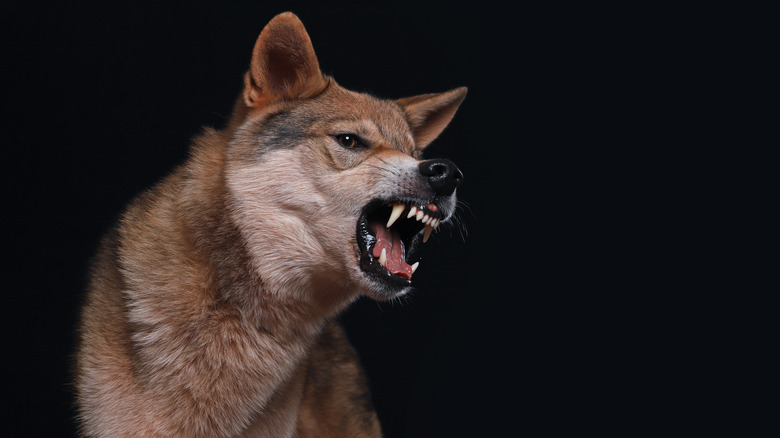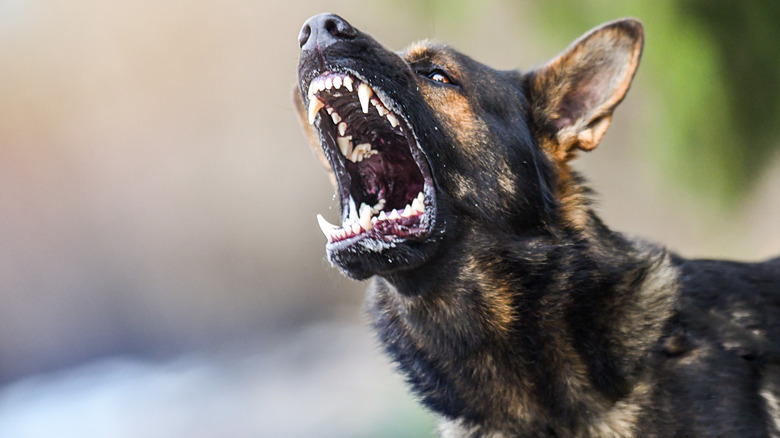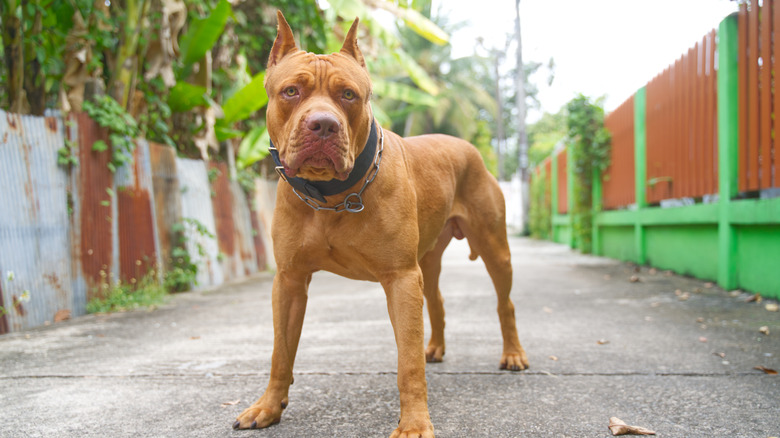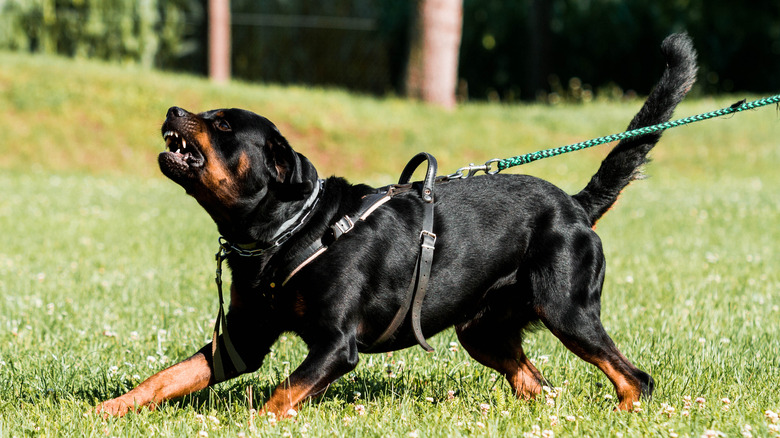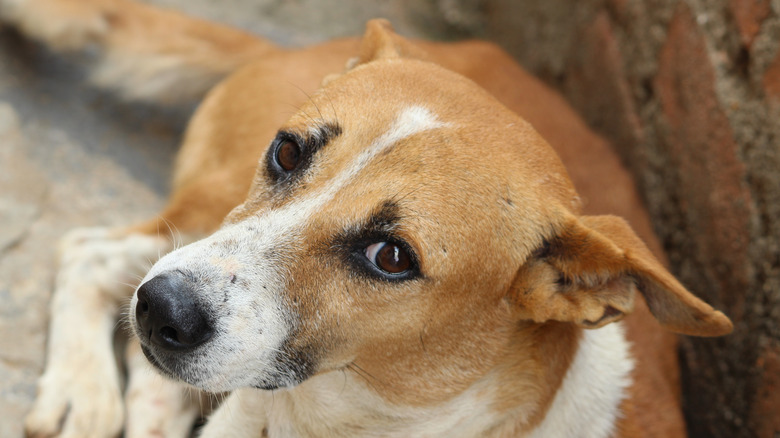The Most Dangerous Dog Breeds Throughout History
People and dogs have been best friends for thousands of years, so long in fact that people have almost forgotten our dogs are really just wolves that like us. Genetically, a wolf and a dog are pretty close to being the same animal, it's just that over the millennia dogs have been bred to have floppy ears, fancy colors, and to become whatever the heck a chihuahua is. At heart, though, a dog is still an apex predator, and some are more wolf like than others.
Now it's true that each individual dog is more than just its breed, and it's really more about the dog's owner than the dog's genetics. But through the years, certain breeds have been much more prone to violence than others, and it doesn't really matter if that's because of nature or because of nurture. Either way, there have always been some dogs you just don't want playing with your toddler, living in your house, or being on the wrong side of an invading army. Here are some of history's baddest dogs.
The earliest known war dog was the Roman molosser
Today's mastiffs are kind of just like big, drooly teddy bears, so it may surprise you to learn that the original mastiff was bred for violence. One of the earliest known war dogs was a mastiff called a "molosser," and it was most definitely not a family dog. According to the American Molosser Association, ancient molossers date back to at least 1121 B.C. and were not only used as guard dogs but were also trained for war. Legend says the Romans first obtained these dogs from the Persian emperor Xerxes, who had them employed in his army. After Xerxes' defeat, the Spartans captured his dogs and brought them back to Greece.
The Romans liked the look of the molosser and adopted it, but not because they thought it would be good with kids or because they thought its large jowls and drool were especially charming. They bred the dog for battle — Roman Molossers wore armor and fought in formation and were even sometimes pitted against lions in the Colosseum. Attila the Hun is said to have used them in his army, too.
Molossers are still around today, it's just that they are usually called "mastiffs." Technically speaking, though, "molosser" is a type of dog, and a mastiff is a specific breed. Today's mastiffs, with a few exceptions, are generally thought of as gentle giants and good family dogs, so it's nice to know they've outlived their ancestor's reputation for violence. Mostly.
Mastiffs were also used to attack Indigenous people
You know that guy that was celebrated in elementary school, the one who "discovered" America even though there were people already living there and wore a stupid looking hat? Well, it probably won't surprise you to hear that Christopher Columbus was not actually super nice, especially when it came to the inhabitants of the lands he "discovered."
According to Ancient Origins, in 1493 Columbus released Spanish mastiffs against the people of Hispaniola, and a couple of years later he did the same thing against the Arawak people. There's a bloody and gruesome account of what happened next, but it won't be repeated it here because you almost certainly have a functioning imagination. Anyway, after the success of those battles it became a thing for conquistadors to bring along mastiffs or deerhound/mastiff hybrids to help subdue the natives. To make the dogs extra-super terrifying, the conquistadors would outfit their canines in spiked collars and armor. The dogs would often be sent into battle just as the tides were starting to turn in the conquistadors' favor — when the dogs entered the fray, the terror and chaos they would add to the battle was generally enough to disorient and dishearten the Indigenous warriors and ensure victory for the Spanish.
The conquistadors' war dogs were so successful that history even remembers the name of one especially vicious beast — Becerrillo, who, according to the stories, was capable of dispatching roughly one human being per minute.
Pekingese are little dogs with big personality
Big dogs can be terrifying, sure, but have you ever been attacked by a Pekingese? It's actually pretty astonishing how quickly they can transform from ball of fluff into terrifying, fang-riddled ball of fluff.
Chinese nobles knew this too, and they would hide Pekingese dogs in their sleeves so they could leap out at unsuspecting enemies, or maybe just at people who were irritating. They were so famous for this task that today the Pekingese Club of America calls them "the ancient Chinese version of mace." According to the American Kennel Club, the Chinese thought Pekingese were actually lions the Buddha had magically transformed into tiny, yappy dogs, which doesn't make sense really since the Buddha was all about peace and harmony, and that seems like a really messed up thing to do to a lion.
Anyway, these specific Pekingese were the teacup variety — they were small enough to ride around in the flowing sleeves of Chinese royalty but yappy enough to strike fear into the hearts of misbehaving servants or whoever. They weren't just little guard dogs, though, they were also accessories. If you wanted to wear a yellow robe, for example, you'd need a sable-colored dog. You could also match other colors with black dogs, red dogs, or multi-colored dogs. So basically, if you were truly fashionable you needed to have a whole closet full of different colored Pekingese to choose from. And hopefully they were house trained. Or sleeve trained?
The bully kutta can grow to be four times the size of a pit bull
In the fourth century B.C., the ruler of Punjab presented Alexander the Great with 150 dogs he claimed had "a strain of tiger blood." Indian dog breeders of the time liked to say this about brindled and spotted dogs, because they figured they could get a better price for an animal that had such an impressive lineage. According to Telangana Today, these animals were the predecessors of today's bully kutta, which is one of those dogs that regularly lands on insurance companies' lists of "dangerous dogs."
The bully kutta is huge — the largest can weigh up to 200 pounds — aggressive, and is still used in India for illegal dog fighting. Fighting bully kuttas are single-minded and will even attack their own handlers. It's not uncommon to hear former owners and trainers refer to the breed as "virtually untrainable," which is really not a quality you want in an enormous, naturally aggressive dog.
The bully kutta is also known as "the beast of the east," for obvious reasons. Bully kuttas are two to four times the size of a pit bull, which has made them valuable outside of India in other nations that have a thriving underground dog fighting industry. Their aggressive personality also makes them efficient guard dogs, though you can expect them to take down pretty much everyone from a bona fide intruder to the mailman or your grandma, so you know, pros and cons.
Russian bear dogs are big fluffy teddy bears that will kill you
If you like big, fluffy dogs, then Russian bear dogs are absolutely not the breed for you because although they are indeed fluffy, you probably don't want to be cuddling one or anything. This breed is notoriously unpredictable and aggressive. Over the years, that's made them especially valuable as guard dogs, especially in situations where the well-being of the person on the recieving end is not super high priority.
Russian bear dogs are huge, and it's not just all that fur, either. The largest specimens are close to 3-feet tall at the shoulder. Originally, they were employed as super effective guard dogs because no intelligent wolf is going to come within a couple of miles of one of these things. According to Animalso, owners describe Russian bear dogs as gentle, and victims describe them as absolutely terrifying. Like bully kuttas, they are difficult to train — but happily, they are also loyal so unlikely to turn on their owners while refusing to do what they're told. Most trainers don't advise using aggressive training techniques, though, because Russian bear dogs don't really like knowing they aren't the alpha dog.
In Russia, bear dogs are often used to control prisoners — they're trained to view guards as their pals and prisoners as meat snacks, which is great for making sure everyone stays in line and for quickly putting down violent unrest.
Bloodhounds are useful dogs with a sordid history
Today bloodhounds are thought of as goofy-looking search and rescue dogs, though they've also helped authorities track down criminals. They are not often thought of as vicious, and that's because there are no longer runaway slaves as in the 19th century southern United States.
According to Black Then, runaway slaves were often pursued by packs of bloodhounds, and these dogs weren't trained to yip playfully and give big, wet, sloppy kisses when they located their quarry, either. Plantation bloodhounds could track just as well as a modern search and rescue dog, but the search often ended violently. You might wonder why slave owners wanted their dogs to maul a runaway who was otherwise considered valuable — well, they thought it would help teach other would-be runaways a lesson. And they would usually call off the dogs before the slave was well and truly dead, you know, because a few ugly scars probably wasn't going to permanently prevent him from being useful in the fields.
Besides bloodhounds, slavers also used the "dogo Cubano" to pursue runaways. This dog was a cross between a Spanish war dog, a mastiff, and a bloodhound. That combination gave you an animal with the best of all breeds — size, nose, and aggression. Handlers would train these dogs by setting them on practice runaways, who were typically innocent slaves who had to kind of just quietly pray they didn't end up becoming a newbie bloodhound's first victim.
Let's breed German shepherds with wolves and see what happens
You might think that tracker-mauler type dogs wouldn't have outlived slavery, but they did. These dogs still existed well into the 20th century, when they were bred to fight guerilla soldiers in 1980s apartheid South Africa. According to Wolfsong Alaska, breeders hoped to produce a "super dog," an animal that could outrun guerillas who often carried vials of amphetamine and adrenaline to help them evade ordinary dogs.
But how exactly does one breed a dog with that kind of stamina? Well, someone had the brilliant idea to cross German shepherds with wolves in the hope of getting an animal with a wolf's stamina and ferocity and a German shepherd's loyalty and trainability. Which seems a bit like someone didn't really research this idea thoroughly before importing all those North American wolves, because it's not like wolf dogs were an especially original idea, and pretty much anyone who has over owned one can tell you they're about as easy to train as a bully kutta. They're also always looking to overthrow the alpha wolf, which in this case is the trainer, so they may have been more of a danger to breeders and handlers than to actual guerillas.
Fortunately, the project was a total failure, and the wolf dogs weren't widely deployed in the fight against apartheid resisters, though at least one of the project's dogs was amenable enough that he remained in service for more than 10 years.
German Shepherds are professional bad dogs
Some dogs are untrainable, like the bully kutta, and other dogs are easy to train, like the German shepherd — and that really just makes bully kuttas and German shepherds two sides of the same coin. Untrainable dogs are dangerous, and trainable dogs can be dangerous, too, but mostly because they become extensions of the people training them.
German shepherds are smart, super loyal, and fast learners. That sounds great in principle, but German shepherds also have a really sinister history. There's a reason why these animals make such great police and military dogs — despite having the word "shepherd" in their name, they were specifically bred for violent jobs (via the Military Working Dog Team Support Association) in the late 1800s and early 1900s. In fact the first German shepherds were used in the very first German K9 Corps and went on from there to serve in the German military during World War I. They were so successful in this role that even those on the opposing side of the conflict recognized their value and obtained them for military and police service outside of Germany.
In the 1960s, police set their German shepherds on peaceful civil rights protestors in Birmingham, Alabama, notes the African American Intellectual History Society, and today these dogs are still the preferred police dog, though labradors, rottweilers, and blood hounds are also trained for police and military service. To be fair, though, German shepherds also have a place in private homes, where they are valued as guard dogs and as loyal family pets.
Pit bulls may be misunderstood, but there's a good reason for that
Probably no other dog is as controversial as the pit bull. Dedicated owners will tell you that pit bulls are loyal, gentle family dogs who are simply misunderstood, and that the temperament of a pit bull is down to the owner, not the breed. But whatever the cause of the pit bull's reputation, it's not undeserved. According to LiveScience, statistics alone confirm what most of us have already suspected — pit bulls are the most dangerous dogs in the modern United States. In fact a 2009 study published by Plastic and Reconstructive Surgery found that over a five-year period more than half of all the dog bite victims treated by the Children's Hospital of Philadelphia were from pit bulls. And it's not just Philadelphia — similar studies found similar rates of pit bull-related injuries in other states, and one study even found that pit bull attacks are more likely to be serious or even fatal than attacks by other dogs.
Of course none of that necessarily means a pit bull is a bad dog at heart, and the fact that so many of these dogs are involved in serious attacks may just be because of the sorts of people who are attracted to owning pit bulls in the first place. A 2011 study found that the owners of dogs that bite tend to be shady people with a penchant for "criminal thinking." They were also more likely to have criminal records and to be violent themselves.
Rottweilers are America's number twos
Pit bulls may rule when it comes to dog bites, but there also has to be someone in that number two position. According to LiveScience, it's the rottweiler. In fact 9% of all bites perpetuated against the patients of the Children's Hospital of Philadelphia were delivered by rottweilers, and 6% were rottweiler/pit bull mixes. A 2019 study (via Dogsbite) expanded on that relatively small sample size by concluding that rottweilers were responsible for 8% of all dog attack fatalities, just behind mixed breeds (13%) and pit bulls (69%). And rottweilers only account for roughly 3% of the U.S. dog population, so those numbers are not really proportional.
Rottweilers are similar to pit bulls in that people like them because they have a reputation as a tough-person's dog. But because rottweilers are bigger and more powerful than pit bulls, they are also harder to control and more capable of causing serious damage. They're also naturally aggressive and protective and can get pretty wound up if they don't get enough exercise, which means if their owners don't train them properly, give them lots of room to run, and learn how to handle them, a bad situation can escalate pretty quickly.
Not all rottweilers are bad, of course, but that hasn't stopped insurance companies from blacklisting the entire breed as a "dangerous dog," which means excluding them from coverage. So if you're thinking of adopting a rottweiler, it's a good idea to know exactly what you're getting into.
Beware the feral Indian pariah dog
The pariah dog of India is similar in appearance to the Australian dingo but a lot more dangerous — especially when it goes feral. And in India stray pariahs (and other dogs) are practically an urban infestation, and there isn't much of a push to do anything about them.
Rabies has been virtually eliminated in domesticated animals in the United States, but that's because pets are vaccinated, and animals that end up as strays are picked up by animal control and either rehomed or euthanized. Packs of stray dogs aren't usually tolerated, because letting animals live in the street just isn't humane, and also because they're dangerous. Ultimately, feral dogs in America don't really ever become a problem. Feral chickens, well, those are actually a problem, but feral dogs aren't. Fortunately there is no such thing as a rabid chicken.
Anyway, according to The New York Times, India has roughly one-third of all the rabies deaths in the world, and even stray dogs that don't carry rabies can be aggressive and potentially deadly. In 2011, there were 80,000 dog bites in Mumbai alone, and those are just the bites that were reported. And many of the people living in big cities don't seek medical care for a dog bite, which is why so many of these bite victims also become rabies victims.
